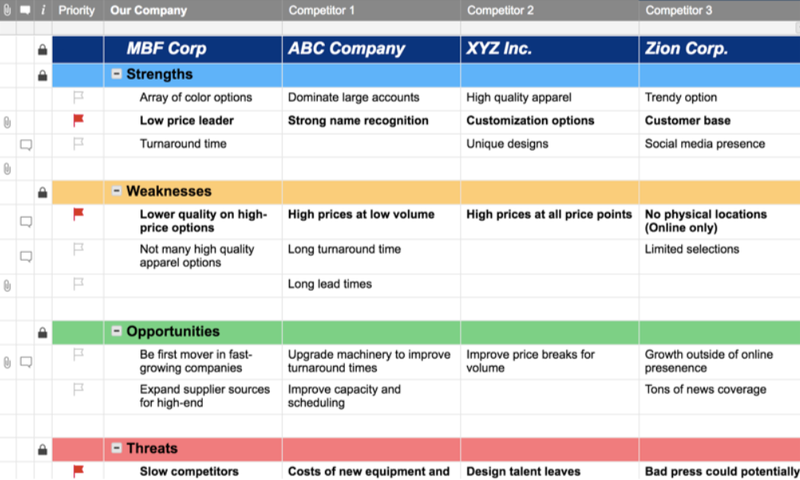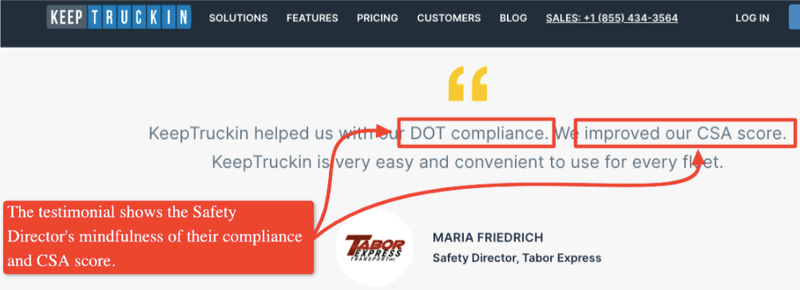If you want your business to stand out, you need to build your brand. Without clear self-definition, authenticity, and a plan to provide consistent experiences to your audience that further establish your unique brand image, you’ll be forgotten.
With a well-developed brand, though, you set yourself up for success. According to Stackla, “86 percent of consumers say authenticity is important when deciding what brands they like and support.” You can’t be authentic without branding. You don’t even have a clear identity without it.
Considering how crucial branding is to generating sales, you’d be severely handicapped if your competitors have a robust brand development strategy and you do not.
Overview: What is brand development?
From a 30,000 foot perspective, brand development is the process of building and improving your customers’ understanding and knowledge of your brand, making it one of the foundations of your marketing plan.
The process includes establishing and strengthening your brand identity, aligning your brand strategy with your business objectives, and incorporating it into your marketing. Your brand development strategy serves as your blueprint to accomplishing these tasks.
How to create a brand development strategy for your small business
While there is no one-size-fits-all structure for brand development, the steps below are a great framework to build upon.
Step 1. Understand your business
Take a closer look at your advocacies, values, and interests — the things that you stand for and how you want to be perceived. These lay the foundation of your brand development strategy. Whatever methods you employ for your small business marketing campaigns need to align with your brand identity.
A common mistake companies make is pursuing the next shiny object they come across at the expense of building their brand identity. Some companies jump from one industry to another without considering how the shift would impact their brand.
Aside from assessing your brand, determine where you stand in your industry. Conduct a brand audit. Study how your company stacks against your competitors to learn which areas you should improve.
Perform strengths, weaknesses, opportunities, and threats (SWOT) analysis to effect a strategic comparison, then use that information to come up with effective brand marketing strategies.
Smartsheet has an easy-to-use template for SWOT analysis. This tool also helps you capture discussions, store supporting documentation in one location, and share them with your key stakeholders for transparency.

Step 2. Research and identify your audience
Creating an effective brand strategy requires that you know your audience. You need a firm grasp of their pain points and aspirations. Otherwise, you’ll be hard-pressed to develop effective marketing campaigns or brand positioning.
Learning about your customers isn’t rocket science. By checking customer feedback, testimonials, and reviews, you can uncover crucial insights about them. You can even visit the website of your direct competitors to see what their customers are saying.
Here’s an example of a customer testimonial from KeepTruckin.

If you’re one of KeepTruckin’s direct competitors, reading the testimonial should tell you that your customers value DOT compliance and an improved CSA score. If you visit several other competitor websites, you’ll see other common concerns being brought up.
Step 3. Spread brand awareness
Before you produce content or conduct any form of marketing, establish your branding guidelines to ensure consistency in the way you present your brand across channels. Once the guidelines are ready, and you’ve established your brand identity design, you can start promoting through tried and tested marketing methods, such as organic search, social media, and content marketing.
To get better results from your marketing initiatives, consider using marketing automation software so you can do more in less time. For example, automation tools, such as Freshmarketer, let you create customer journey paths to nurture your relationship with your leads or customers.
The journey path automatically runs 24/7 so you don’t need to be present to keep the whole thing working. That means your leads are nurtured and you’re continuously generating sales even when you’re not in front of your computer.

Together with automation software, follow marketing automation best practices, such as setting up a lead qualification process, lead scores, and personalization. These will help you get even better results out of your marketing automation strategies.
Step 4. Manage brand growth
Done right, your brand development strategy should help you generate more website traffic, sales and leads, and more brand mentions. That’s why you need to track these numbers, among other KPIs. Tracking shows which initiatives are yielding meaningful results. It also helps you get rid of, or improve, your poor-performing campaigns.
Whether you’re using agile marketing or a more traditional framework, you’ll have a hard time managing your brand growth without tracking.
To help you monitor your brand mentions and reply to them quicker, use a robust social listening tool, such as Hootsuite. The tool’s stream interface shows you the mentions made about your brand from within the platform.

Because you can see all the mentions made about your brand in a single place, it’s easier to respond to inquiries.
Brand development examples
Take inspiration from these companies that underwent successful brand development.
1. General Electric (GE)
Back in the day, General Electric focused solely on creating electronic products, starting from Thomas Edison’s lightbulb filament that could stay lit up to 1,200 hours.
As their business grew and they learned more about their customers, they realized they could also serve them better by venturing into other industries, such as power grids, jet engines, health, and more.
GE’s brand development allowed it to serve more people while it continued to advocate and innovate. As of 2019, GE is ranked among Fortune 500’s largest firms in the U.S. by gross revenue, and it continues to be a leading brand in multiple industries.
2. Amazon
In 1994, Jeff Bezos started selling books online with the promise of delivering any book to any reader anywhere. As the company’s sales grew, so did room for expansion. Amazon developed the brand by rapidly expanding in other areas.
Jeff Bezos claimed that Amazon was more than a consumer product retailing company. He established a strategy focused on simplifying online transactions for customers. The company’s Associates program exploded from a single site to more than 350,000 after three years. This program allows websites to offer products for sale and Amazon.com handles order fulfillment and pays a commission to sellers.
By 1999, Amazon was selling music, videos, software, consumer electronics, home improvement items, toys, and many more. Many years down the line and Amazon is now a multinational tech company that focuses on e-commerce, digital streaming, cloud computing, and artificial intelligence.
3. Facebook
Facebook started as a website aimed at college students that allowed students to connect online by posting their photos and personal information. As Facebook’s popularity increased, the founders developed the website into a social networking platform for users around the world.
Over the years, Facebook developed into a platform that allows users to buy and sell services or items on Marketplace, run social media ads, join common interest groups, use an array of embedded apps, and more. To further establish its identity as a social media giant, Facebook strategically bought their competitors and other related social applications, such as Instagram and WhatsApp.
Start building your small business brand development strategy
Creating a brand can seem like a pretty straightforward process. But building a strong and successful brand that can stand the test of time, competitors, and changing consumer interests and demands takes careful planning, time, and commitment.
Use the tips in this guide to create a robust brand development strategy. If brand development isn’t exactly your forte, consider working with reliable brand agencies to establish your brand.
The post How to Create a Brand Development Strategy for Your Small Business appeared first on The blueprint and is written by Jimmy Rodela
Original source: The blueprint


